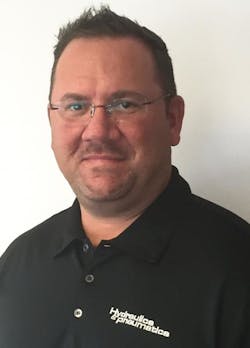But it goes deeper than that. There are other important distinguishing characteristics of H&P. We cover the total market for fluid power technology, meaning that we report on original equipment manufacturers' (OEM) products and techniques, but we also cover maintenance, repair, and other aftermarket best practices and products. While many products are sold by fluid power component manufacturers directly to OEMs, a large segment of fluid power component sales involves the supply channel and the end use aftermarket.
Both areas have their specialists. Consider the architect of a home, who conceives a design, plans it carefully, and conveys that plan to the builders. The building professionals carry out the design plan of the architect to bring the home to reality. They use building materials and procedures to construct the home the best they can. This is the equivalent to the design engineer and OEM.
Now consider all the maintenance, repair, and remodeling of a home that takes place in the years and decades after it is built. Consider all the materials, contractors, and procedures that are used to beautify homes over time. This set of goods and services is comparable to the fluid power aftermarket.
In both cases — homes and fluid power systems — the OEM and the aftermarket specialists have certain skills and use certain products to get the job done. While one set of individuals makes the end product (home or machine) happen, the other set of specialists not only maintains the end use product, but regularly seeks to make improvements to keep things up to date.
We at Hydraulics & Pneumatics regularly report on the products and procedures that build the very best mobile and industrial machines. We also produce articles and application stories that tell our audience about products and practices that maintain and improve mobile and industrial machinery across all markets. This formula has worked for us and our readers since 1948 and we are confident that our content has not only stayed current with technology but is often on the cutting edge.


